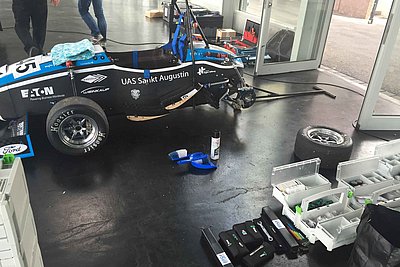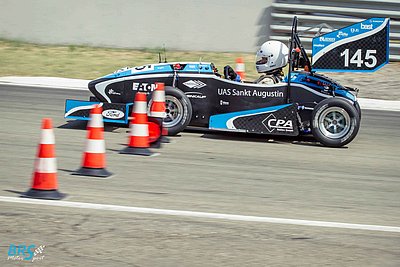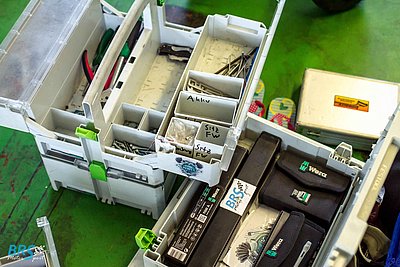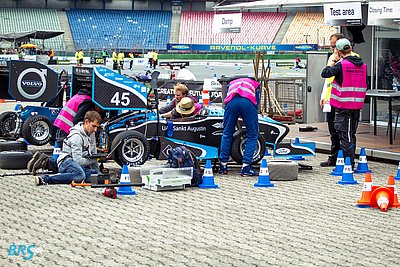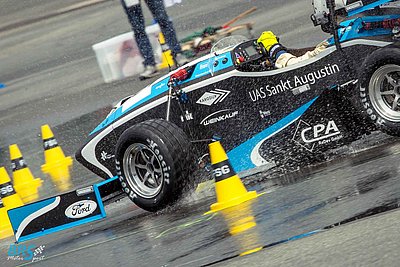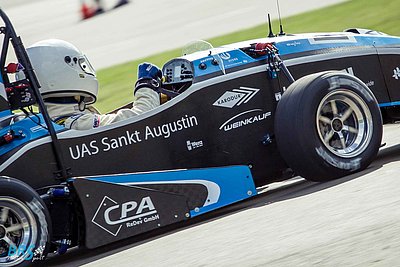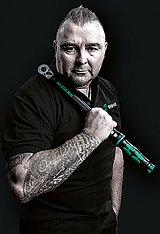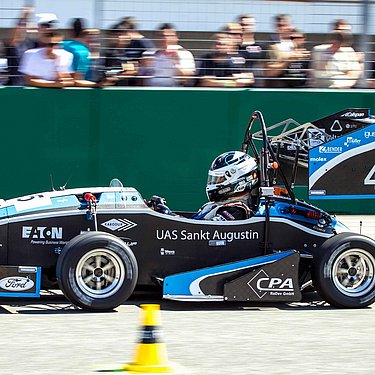
Thoroughbred racing alongside your studies

Over 650 universities and technical colleges from around the world independently develop and build Formula race cars that must master a series of dynamic and static disciplines. In the static events, a business plan, cost analysis, and technical design must impress a jury to earn as many points as possible. Then it’s off to the track: to prevent these prototypes—developed over months of work—from ending up in a pile of wreckage, only time-based races are held. From acceleration to autocross and endurance races, the self-constructed vehicles must prove their capabilities. It’s not just raw power that counts, but the overall package: lightweight construction, efficient aerodynamics that Formula 1 engineers can only dream of, good drivability, energy efficiency, and above all, reliability determine who ranks among the best. The latter aspect brought the team unexpected success in 2016: second place in Italy, sixth in Germany, and seventh in Austria in the overall standings.
In 2007, the team consisted of fewer than ten people, but today 80 people are behind the massive development process and management. That’s roughly equivalent to the manpower of a mid-90s Formula 1 team. Formula Student teams are sponsored by industry and supported in manufacturing. In return, talents from the scene are often recruited. Developments are also carried out at the sponsors’ facilities as internships, bachelor’s or master’s theses.

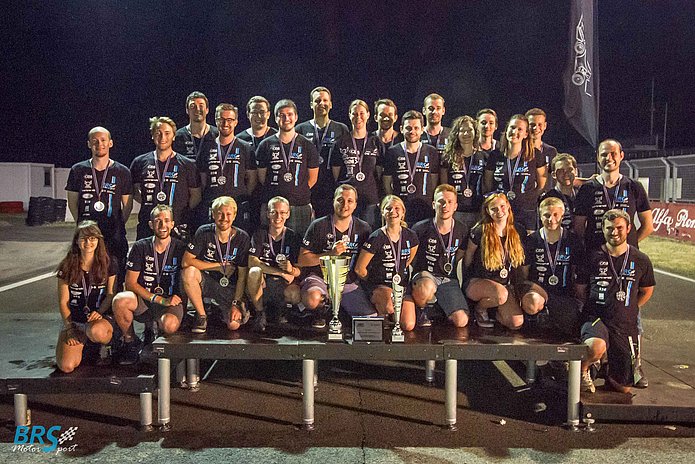
The team relies on a sustainable approach to development: Since students come and go, alumni and senior members act as mentors for newcomers, teaching CAD, specialized simulation, and design skills in weekly courses. This ensures seamless transitions between generations without the need for complete restarts and painful learning processes each time.
